In the space below, we extract Latent Principles (LPs) based on a simple, linear induction process, which is the first phase of the induction-illustration sequence. This process decodes the vast treasures of the Quran and rolls-up to the Inner Pillars, the maqasid al Quran.
History of Maqasid
The scholars of Traditional Islam extracted something similar to Latent Principles, although without using that terminology. They called it maqasid al Shariah, the higher objectives of the Sharia. The extraction process was based on the Traditional complex system, i.e. an interleaved reading of Quran, Sirah and Hadith in an intertwined spaghetti-like manner. The maqasid al Shariah were formulated by traditional scholars such as al-Ghazali in the 12th century CE and al-Shatibi in the 14th. They are Life, Intellect, Lineage, Reputation, and Property, as interpreted by Khaled Abou El Fadl, while other scholars vary slightly.1 By employing BioIslam’s linear sequence of induction-illustration, we arrive at a significantly different set of maqasid, i.e. the five Inner Pillars.
To be intellectually honest, which is an important part of the BioMuslim’s ethos, any LPs we extract are influenced by our subjectivity. Of course, this is also true of every other interpretive attempt made in the distant past by Traditional scholars. This inescapable human limitation colors the tafsir books of Quranic interpretation, such as the works of al-Tabari, al-Baydawi, al-Jawziyyah, al-Qurtubi, ibn Kathir and al-Suyuti, written between 900-1500 CE. Those authors were pious intellectual powerhouses no doubt, but the present value of those books primarily lies in the fact that they inform us about that bygone era’s priorities and sensibilities. Most importantly, those authors were also the victims of the complex system of Traditional Islam and were overwhelmed by the confused tangle of Quran, Sirah and Sahih Hadith. Hence they do not capture the original meaning of the Quran, much less an objective truth, any better than the simple, linear interpretation below.
More importantly, the best scholars of every generation will likely arrive at different formulations, since their priorities differ, and as their analytic tools improve, and as the cumulative weight of human experience expands. For example, the eminent philosopher Muhammad Iqbal (d. 1938) formulated his latent principles as Love, Faqr, Courage, Tolerance and kasb-e-halal.2 Faqr is self-regard, perhaps akin to an amalgam of Respect and Lineage in the abovementioned Shatibi formulation. Iqbal’s approach was essentially theohumanistic, and based on latent principles, although he did not use that terminology as such. His was a poetic and noetic approach, versus the analytic and amystical approach of BioIslam. Whether it is al-Ghazali or Shatibi or Iqbal or BioIslam, the LP induction process is inevitably value-laden and therefore falls short of certitude, as with any other interpretation of the Quran or non-scientific books.
Avoid Presentism
Contrary to popular perception, the Quran is a very progressive book but this is often hard to see because our eyeglasses are tinted modern. A casual reading of any ancient religious book may appear at first to be strange, weird or politically incorrect. To appreciate any religion’s contribution, we need to shed modern preconceptions. To appreciate the progressive ethos of the Quran, we need to avoid presentism, the temptation to judge the distant past with our modern sensibilities. Most of us have an attitude of temporal superiority, were we look down on some or many of the values held by prior generations. “Presentism, at its worst, encourages a kind of moral complacency and self-congratulation”, says a leading historian.3
On the other hand, many proponents of Traditional Islam seek a return to an idealized and glorious past as an escape from the moral failings of the present. They have a static view — whatever happened back then, to the extent that we know it, was just right, and should mostly remain that way, regardless of the extreme social context of that era. They are too rigid or timid to accept that the moral progress that unfurled over the 23-year period of Quranic revelation must continue, governed by its latent logic. BioIslam’s interpretive method is dynamic and aims to avoid errors of both presentism and Traditionalism – it distills the timeless latent value of ancient revelation as a progressive guide to the present. This approach is key to extracting sensible latent principles.
All but the last Inner Pillar of Potentiality require no explanation to anyone familiar with Traditional Islam. The key concept of theohumanism is inspired by the pillar of Potentiality, since it directly acts upon the Big Five problems. The LPs that underlie Potentiality suggest that BioIslam maximizes human potential — the result is productivity, which leads to a type of progress that is conducive to alleviating the Big Five problems, as opposed to progress for progress’ sake.
Extraction Process
How did we extract and group the LPs? The high-level LPs below are either directly extracted from one or more Quranic verses, or rolled up from the low-level LPs. Some LPs are extracted from a single verse. In other cases, multiple verses result in a single LP. Also, some longer verses inspire multiple LPs. For some longer verses, only the section relevant to the formulation of the underlying LP is presented here. Some verses of the Quran have been omitted from the charts below since they do not directly inspire any LPs relevant to contemporary pragmatic life, such as the approximately 30 verses that mention Jinn or the 300 verses that discuss Judgement Day. However, they are not without purpose. They suggest that Islam (or any other prophetic religion) cannot be entirely understood by rational means. Spiritual intuition gained through meditation or introspection might deliver greater insight into the theo-humanistic possibilities of BioIslam, but are beyond the current scope of our amystical analysis.
Latent Principles
The LPs for pillars 1, 3 and 5, Intentions, Justice and Potentiality are presented below. The LPs for pillars 2 and 4, Compassion and Harmony, are not included here, but are fairly easy to extract, even for those with Traditional thinking. Extraction requires proactive engagement with the Quran, and is a valuable exercise for the reader. It is important to note that every sincere student of the Quran might extract a slightly different set of LPs for a given set of Quranic verses. As noted earlier, even the most advanced interpreter is subject to human fallibility, hence pure exegesis is not possible, only eisegesis. And that is the way God/Allah ﷻ prefers since diversity of interpretation makes the community intellectually stronger. So the list below should be viewed as the output of one humble attempt at extracting the infinite wisdom of the divine.
LPs – Intentions
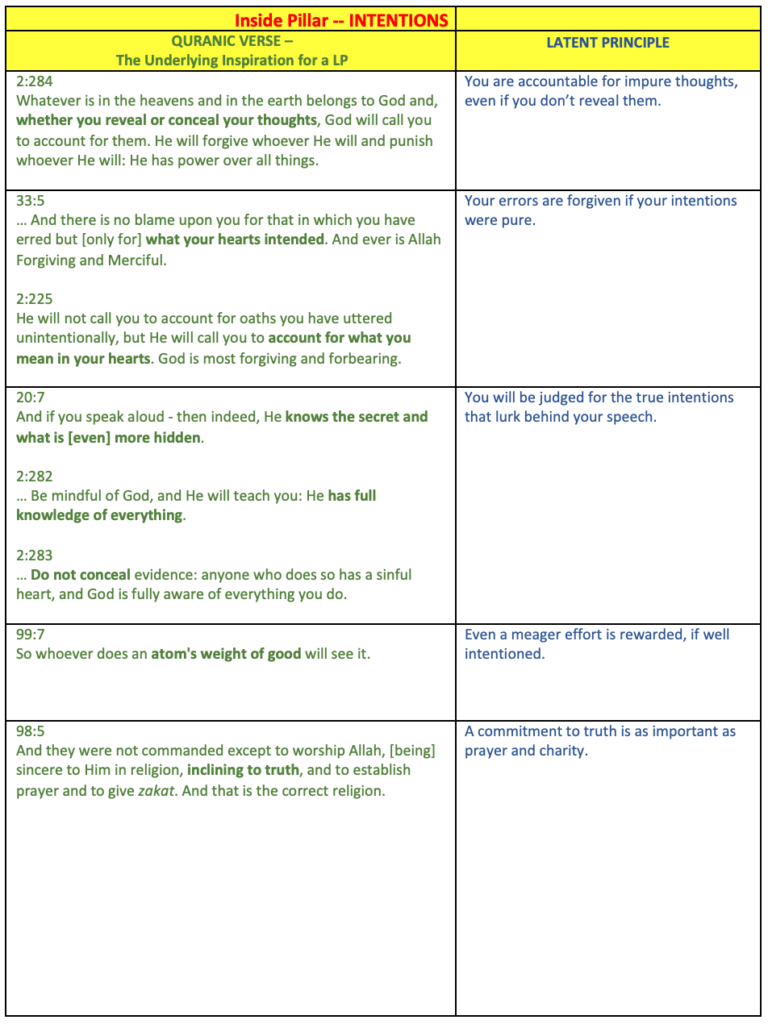
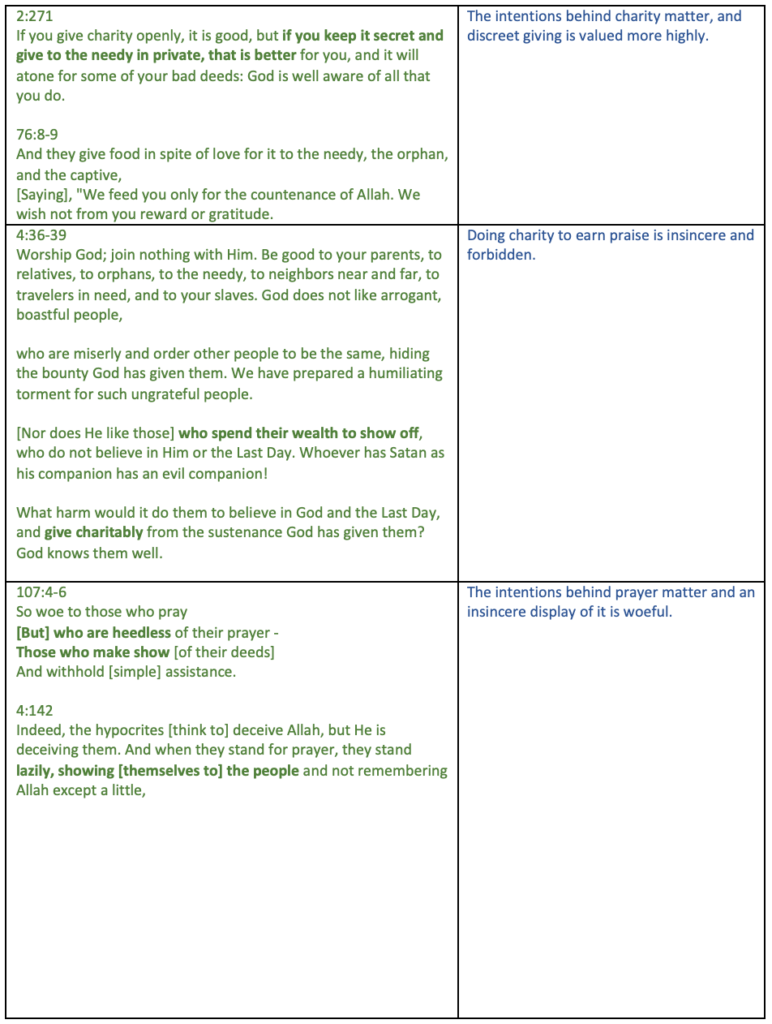
LPs – Justice
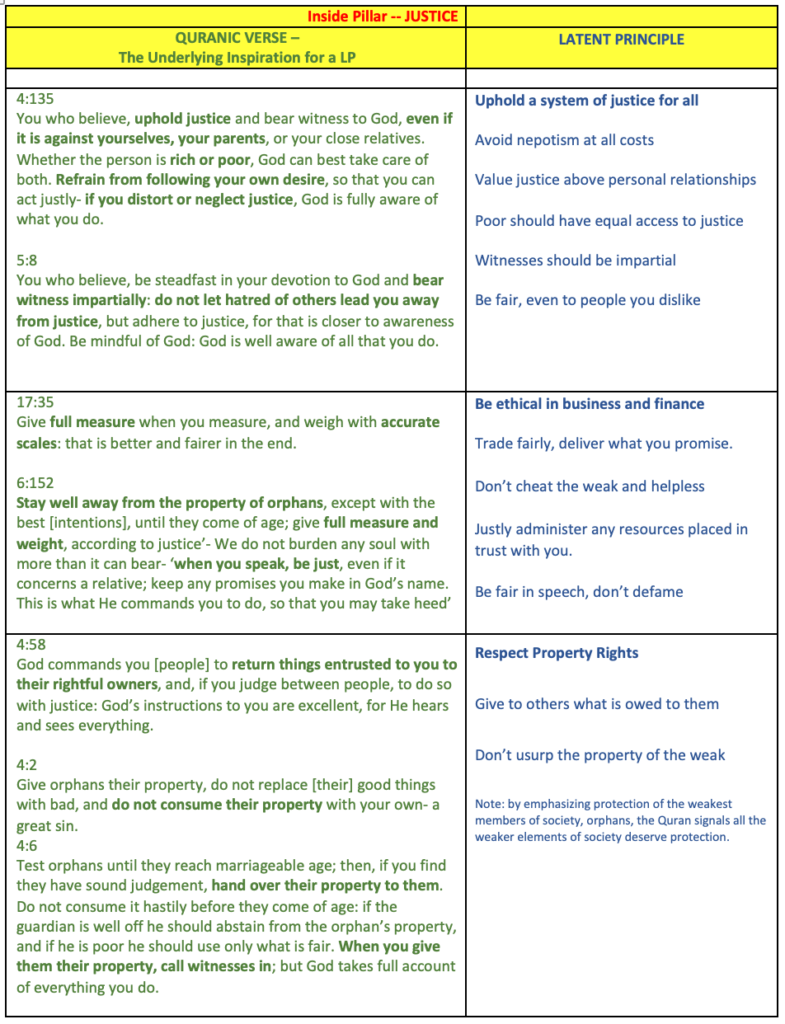
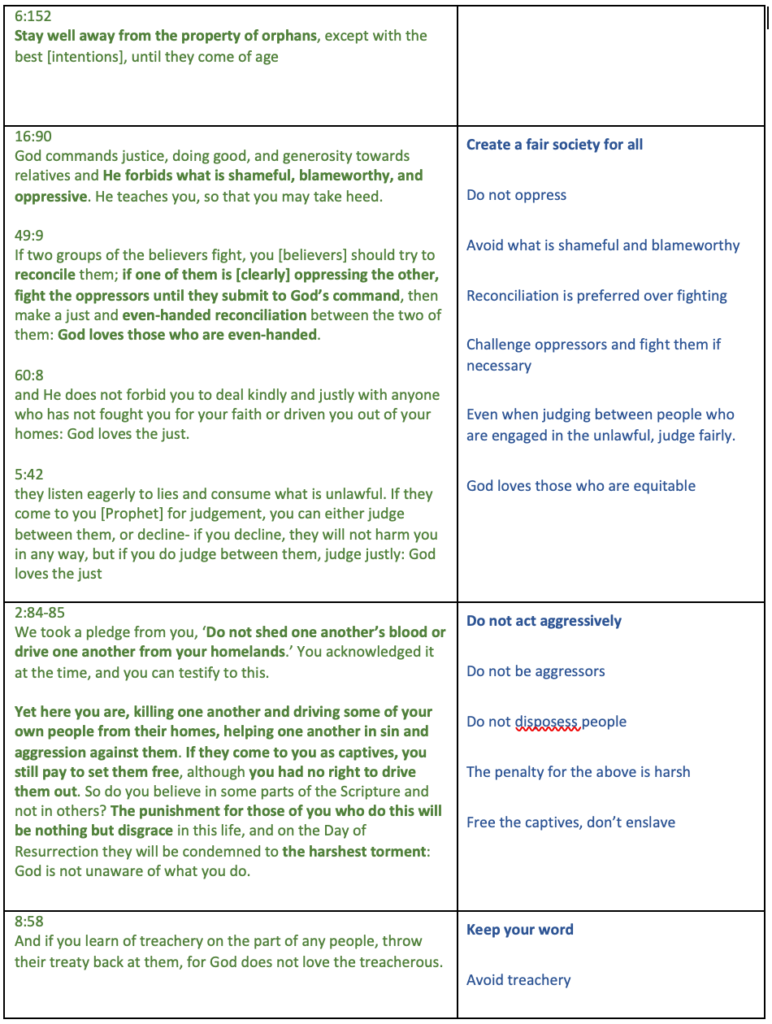



LPs – Potentiality
The relevant Quranic verses are in green. The low-level LPs are in light blue font and high-level LPs are in bold blue font. The high-level LPs are rolled-up from the low-level ones.
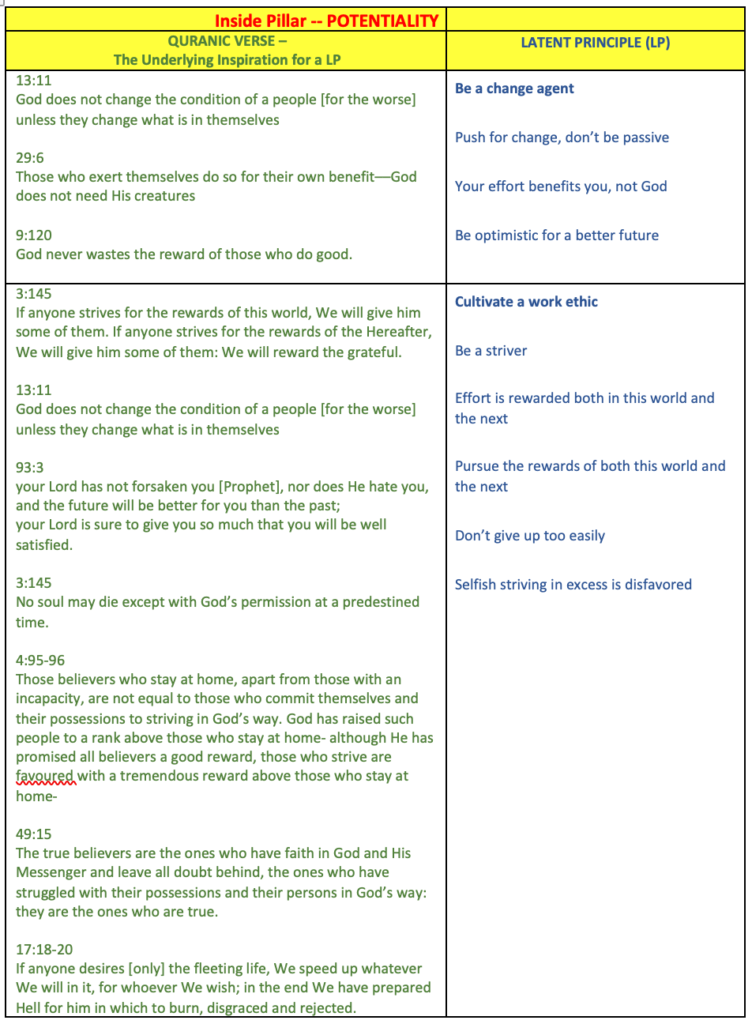
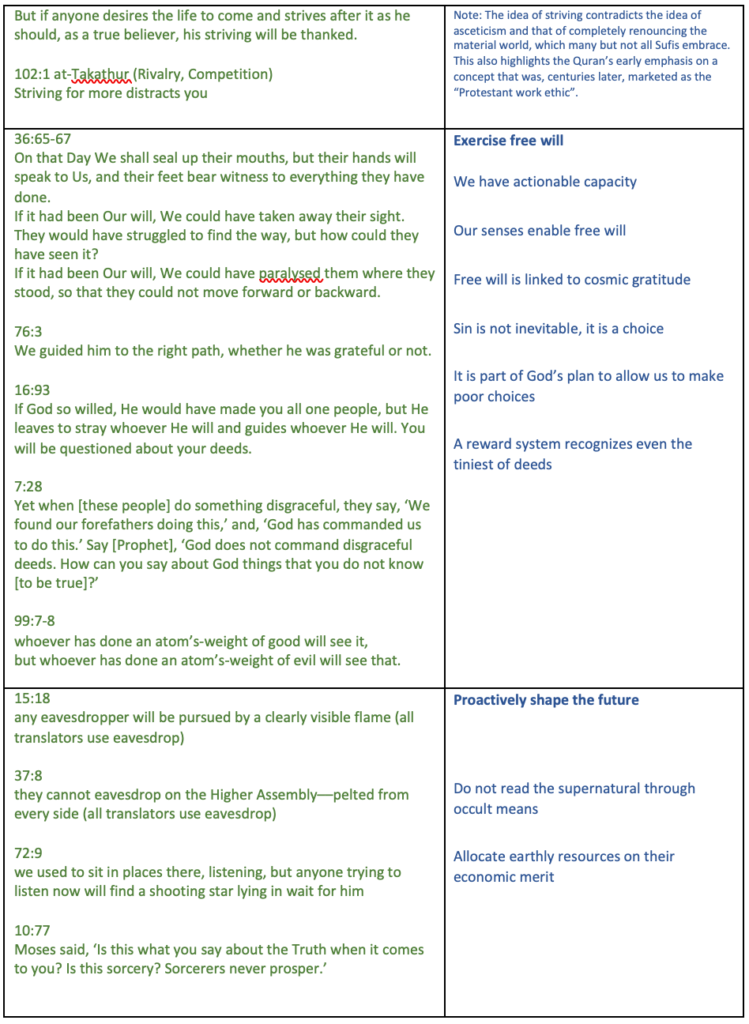


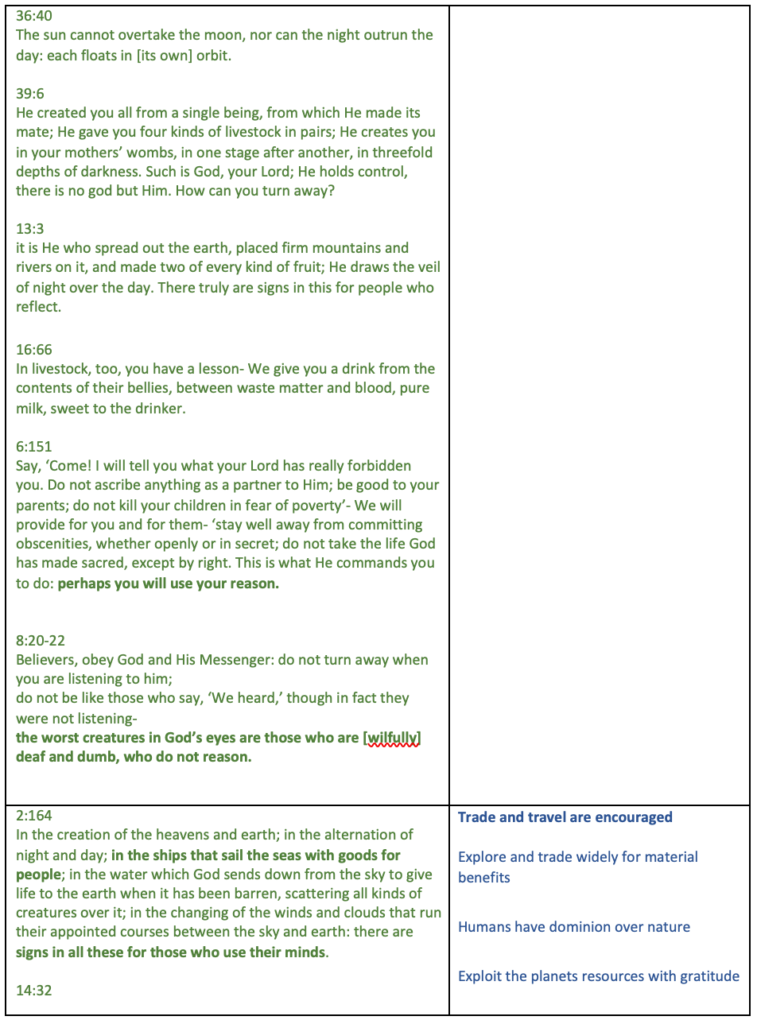
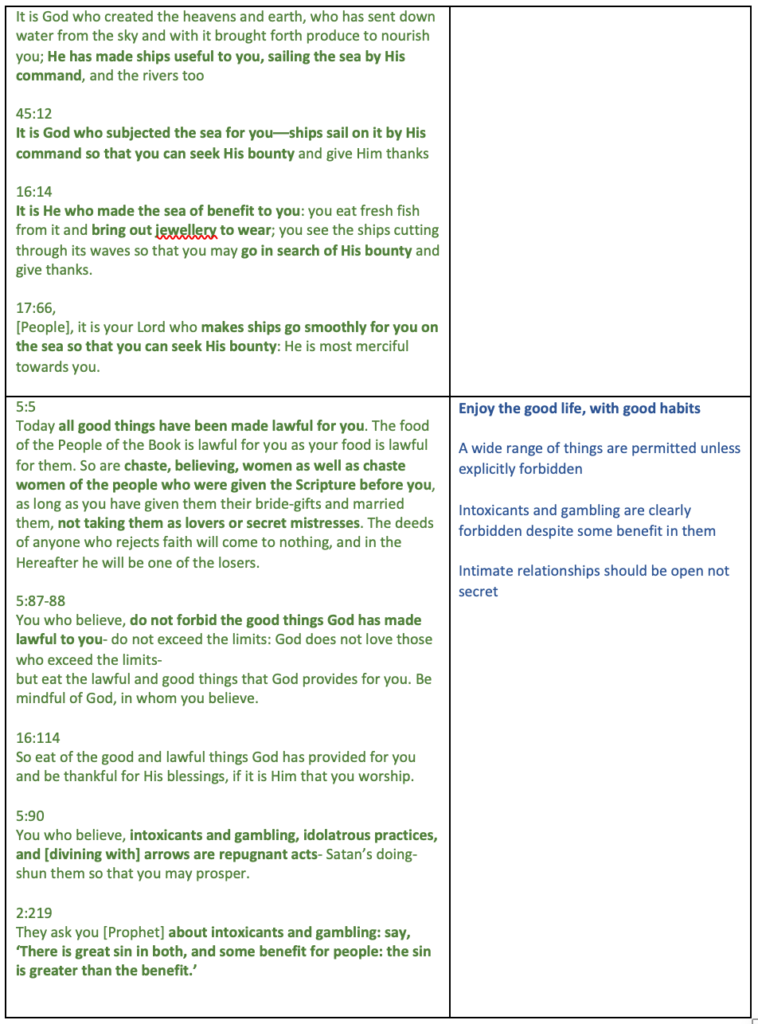
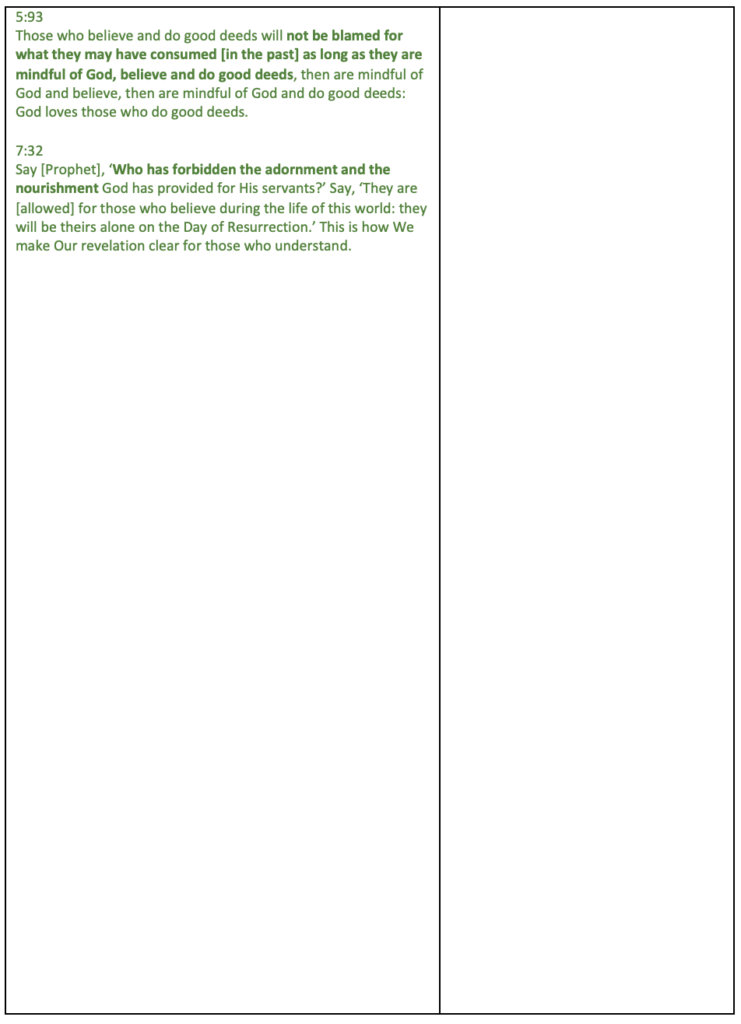
If you have helpful comments or suggestions on the above, please email to BioIslam101@gmail.com
